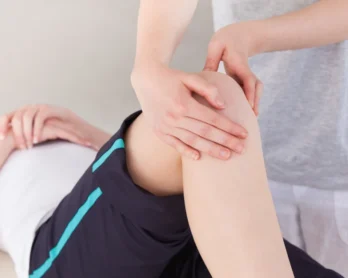Everything You Need to Know About Breast Reduction Surgery
Breasts: We’ve got a love-hate relationship with them. For some women, they can cause be too large and cause tremendous back pain. If you’re considering breast reduction surgery, here’s everything you need to know.
They come in all different shapes, sizes, and textures.
Sometimes women get “blessed” with breasts that are big enough to cause issues. You’re plagued by back pain and poor posture. You’re never able to find a bra that fits and provides proper coverage and support.
You love your ladies, but it may be time to consider reducing your bust size. You’re not alone, as breast reduction surgeries have increased by 183% since 1997.
Are you considering a breast reduction surgery? Here’s everything you need to know before you go under the knife.
The Costs
The cost will vary depending on location and surgeon experience. But expect to pay around $6,000 on average.
Will Your Insurance Cover It?
Be sure to check with your insurance company first. As not all plans will cover a breast reduction surgery.
They will need physical proof of how your breast size is affecting your daily life. You’ll need proof of neck, shoulder, and back pain. Or poor circulation from bra straps is another reason accepted by insurance companies.
Insurance plans may want you to have a BMI of 25 or less, for the past 2 years. Or they may first want proof that you have exhausted all other options for pain relief. Including physical therapy or over the counter pain relief drugs.
They will want to see that a significant amount of tissue is being removed. This is to make sure the procedure is for medical purposes, not personal or cosmetic.
It will help to have documented referrals from your doctors confirming medical reasons you need the procedure. Present physical exams with a handful of providers for the best results.
Are You the Right Candidate?
Breast reduction surgery isn’t for everyone. While you may “want” the size of your breasts reduced, you may not “need” it.
Do your breasts cause significant pain, and affect your wellbeing? Backaches, neck pain, and skin irritation are standard qualifiers for the surgery. Numbness and difficulty breathing are other good reasons to go under the knife.
Is it hard to find clothing and bras for your body type? Many women who end up getting breast surgery have previous experience with depression.
If you don’t meet the medical needs of your insurance company, you can always cover the surgery costs out of pocket.
The Procedure
The surgery gets performed by a plastic surgeon, and it’s an outpatient procedure. The entire process takes about 2 to 5 hours. It involves general anesthesia, so you will be asleep for the entire procedure.
To reduce the size of your breasts, the surgeon will remove access tissue. They will also tighten the skin around the breasts, and reposition your nipples if needed.
During surgery, both breasts may not get treated as equals. Righty or lefty may have more tissue that needs to get removed. But the outcome will leave both breasts balanced and beautiful.
During your consultation, the surgeon will discuss the procedure, expectations, and recovery.
They will give you an idea of how your breasts will look and feel after surgery. As well as any other procedures they recommend to lift and contour your breasts.
Here are four techniques that plastic surgeons use to reduce breast size.
Anchor Method
This method involves a horizontal incision beneath the breast. Followed by a vertical incision up the middle of the breast. The incision then travels up and around the areola.
The technique is best for women with access breast and fat tissue. As this method can remove the most tissue and lift the breasts back up.
Lollipop Method
The lollipop method involves fewer incisions and removes less breast tissue. The incision gets made around the areola and down the breast. It results in a natural look and shape.
This is the preferred method as it involves less scarring and a quicker recovery. But it cannot remove as much breast tissue as the anchor method.
The Donut Method
This method gets used when only a small amount of tissue and skin needs to get removed. The incision gets cut around the areola.
The Scarless Method
This method is also used when only a little tissue needs to get removed, and the breasts don’t need to get lifted. It involves liposuction to make the breasts smaller and lighter.
Be sure to discuss all options with your surgeon to determine which method is best for your body. It’s important to get good advice from your doctor on what to expect during surgery and recovery.
The Recovery
Breast reduction recovery isn’t all that bad. Right after the procedure, you can expect sore arms and less range of movement.
You’ll leave the surgeon’s office without any uncomfortable binding or wrapping of your breasts. But will have to wear a post-surgery bra (or sports bra) for a few months.
The pain and soreness only last about a week, but it’s recommended to take an average of 2 weeks off from work. The beauty of the surgery is that your back pain will get better overnight. If you do experience a lot of pain in your breasts, your doctor will prescribe you pain medication.
During your recovery, have someone to help you with cooking, cleaning, and errands. To speed up your recovery, eat healthy foods, drink plenty of water, and get a lot of rest. Practice proper self-care and take time to relax and heal.
Don’t lift anything heavy. You may need to put those fitness goals on hold or switch to a low impact workout. It takes about 2 weeks to allow light exercise and about a month for full recovery.
Scarring is normal and will vary depending on your genes. Applying a silicone gel cream to the scar should help reduce its appearance. The scars are permanent but will fade over time.
Be on the lookout for any signs of infection. It’s not common but does effect under 5% of patients.
It’s important to know the signs of infection. Contact your doctor immediately if you experience the following:
- Increased redness or swelling around the incision site
- Discharge from the incision site
- Body chills or high fever
- Nausea and vomiting
You may experience inflammation or itching around the incision site. This is normal and will subside on its own.
What Else Should You Know Before You Go?
Prepare yourself with these possible breast reduction surgery precautions and side effects.
Nipple Sensitivity
You may experience changes in nipple sensitivity. If your surgery involves the relocation of your nipples, this can result in them becoming more or less sensitive.
Trouble Breastfeeding
You may not be able to breastfeed. This is the case for about 50% of women, due to the removal of breast tissue, milk ducts, and glands. For this reason, many women choose to wait until after they have had children to get the procedure done.
Other women can still breastfeed, but experience a reduced supply of breast milk. If this is the case, consider the benefits of supplementing breast milk with formula.
Recommended Weight Loss
Your doctor may recommend first losing some weight before undergoing surgery. This is to reduce the risk of complications and to reduce breasts through weight loss. It’s always best to follow a proper diet and exercise plan, rather than a fat burning fad.
Your doctor will also want to make sure you’re in good health with no diseases or medical conditions.
Breast Changes over Time
Breast size fluctuates with age, weight, and pregnancy. Due to this, some women will need more than one breast augmentation surgery in their lifetime.
It’s important to be of the right age. Your breasts should be full grown before considering this procedure.
After surgery, your breasts will take a few months to adjust to their true shape and size. Your new breasts may look a little higher up than normal but will fall into place over the next few months.
It’s Best to Be Realistic
Your doctor will work with you to provide the best possible outcome for your new breasts. It does help to share images of how you want your breasts to look. But you should also be realistic in your expectations.
Your Breast Size, from Melons to Mangoes
It’s best to discuss your expected change in breast size with your doctor, so there are no surprises. Breast reduction surgery doesn’t always result in going down one cup size. It’s more about sizing the breasts to fit your unique body frame.
Following your breast reduction surgery, your doctor may also perform a breast augmentation. This is to further lift and enhance the shape of your breasts. Be sure to follow these best techniques for a quick breast surgery recovery.
After surgery, you can expect breasts to become smaller and more symmetrical. They will have a natural contour and a balanced lift. They will complement your physique.
It’s normal to have fear or anxiety about the procedure, but the results far outweigh this. Most women become thrilled with their new breasts. With the surgery having an 80% satisfaction rate.
Your Life After Breast Reduction Surgery
Breasts can be a blessing or a burden. If you experience the latter, then breast reduction surgery can bring you relief and improve your quality of life.
Following the procedure, be sure to take good care of your new breasts. Practice proper breast cancer awareness and prevention methods.
Get ready for new breasts, and a new you.












